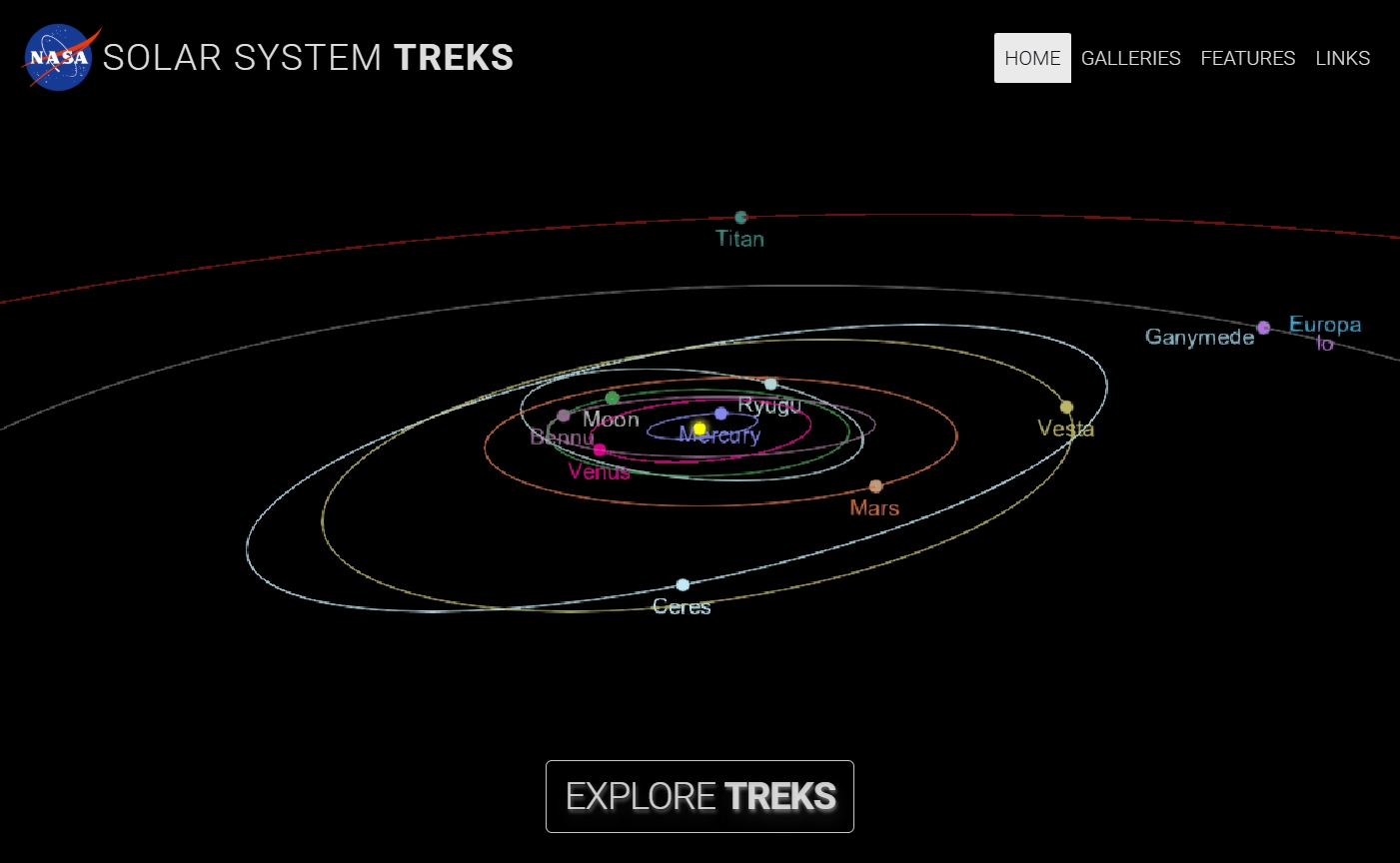One day, a trip to the Seychelles, Zanzibar or Thailand might no longer seem exciting enough. After Tibor Kapu’s space journey, how could we settle for anything less than Mars, Europa or the asteroid Vesta? While traveling there isn’t yet possible in person, we can already explore these destinations virtually. The NASA Solar System Treks portal (https://trek.nasa.gov/) is a stunning web-based platform that allows scientists, educators, students and curious minds alike to explore the surfaces of various celestial bodies in our Solar System. Developed by NASA’s Jet Propulsion Laboratory (JPL), the site is built on data collected over decades by space missions such as the Lunar Reconnaissance Orbiter, Mars Reconnaissance Orbiter, Dawn and Galileo. These missions have gathered high-resolution topographic, spectroscopic and photographic data, which the platform presents in richly detailed, interactive 3D maps and visualizations of the Moon, Mars, Mercury, Venus, Ceres, Io, Europa, Ganymede, various asteroids and more.
Users can explore these surfaces with tools that allow zooming, layering and customizing the maps. A wide range of map types are available, including topographic, shaded relief, albedo and thermal maps, and users can adjust lighting angles or shadow effects to highlight terrain features. Thanks to the multiple projection options and visualization styles, even those accustomed to Earth-based geography—such as schoolchildren—can interpret and understand these alien landscapes.
But it’s not just about looking around: the portal lets users measure distances, create elevation profiles of craters, navigate by coordinates, or even track the routes taken by spacecraft during their missions. What’s more, surface features like craters, volcanoes or Martian valleys can be exported as 3D-printable models.
From an educational standpoint, the portal is an outstanding resource. Teachers can use it to bring planetary geology to life—whether showing the Moon’s maria, the towering Olympus Mons on Mars, or the crater fields hidden beneath Venus’s acidic clouds. Kids can even retrace the landing sites of the Apollo missions on the Moon or visit craters named after Hungarian scientists.
Interstellar travel may still belong to the realm of science fiction, but with NASA’s Treks portal, we can already walk on the Moon or wander the dusty valleys of Mars—if only virtually.

